Have you been dreaming of adding the distinctive blue-green foliage and refreshing scent of eucalyptus to your garden? You’re not alone! Many plant enthusiasts are drawn to these Australian beauties, but wonder if they can successfully grow them in American gardens.
I’ve spent years working with these aromatic trees, and I’m excited to share my top 10 expert tips about Eucalyptus care that will help you grow eucalyptus at home. Whether you’re planning to plant one in your garden, keep it in a container, or grow it indoors, these guidelines will set you up for success.
Understanding Eucalyptus
Eucalyptus trees, also known as gum trees, are evergreen plants native to Australia that have become increasingly popular in American gardens. With their distinctive fragrance and stunning ornamental features, they bring a touch of the exotic to any landscape.
Popular Eucalyptus Varieties
Not all eucalyptus species are created equal when it comes to growing them in American gardens. Here are some top performers:
-
Silver Dollar Eucalyptus (Eucalyptus cinerea): Famous for its round, silvery-blue leaves that look amazing in floral arrangements. It grows 15-30 feet tall in gardens but can be maintained smaller in containers.
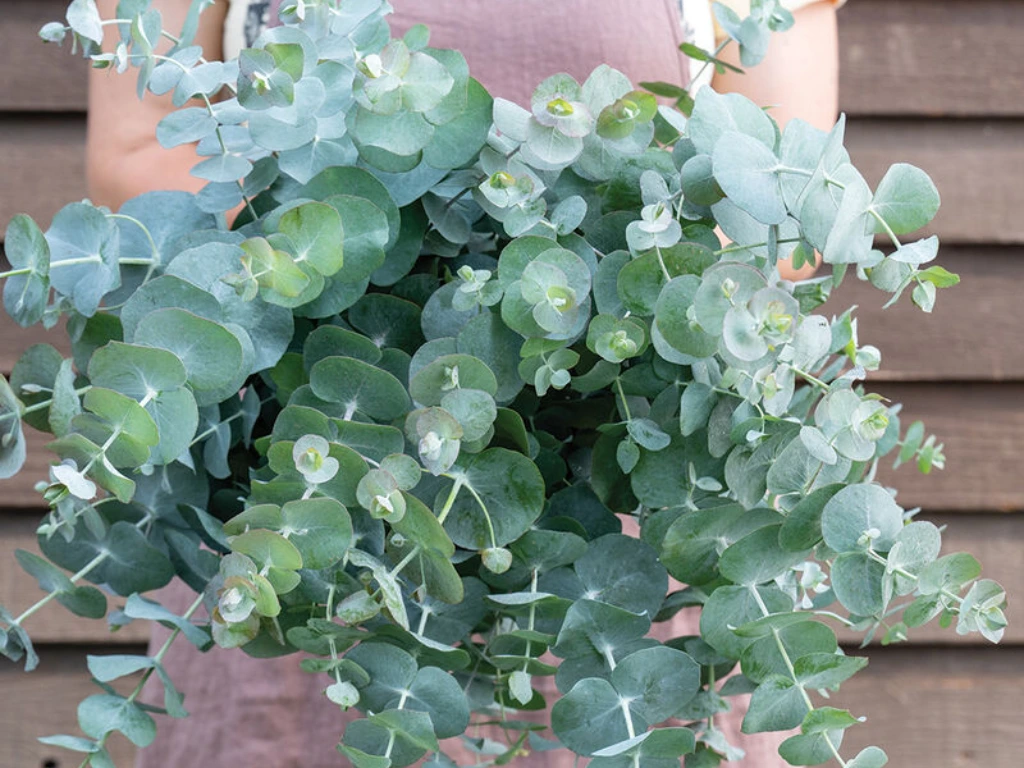
-
Cider Gum (Eucalyptus gunnii): One of the most cold-hardy varieties, making it perfect for gardeners in zones 7-8. Its blue-green foliage has a wonderful scent and can reach 30-40 feet if not pruned.
-
Baby Blue Eucalyptus (Eucalyptus pulverulenta): A compact variety with stunning silver-blue foliage that florists love. It stays smaller than many other types, making it great for gardens with limited space.
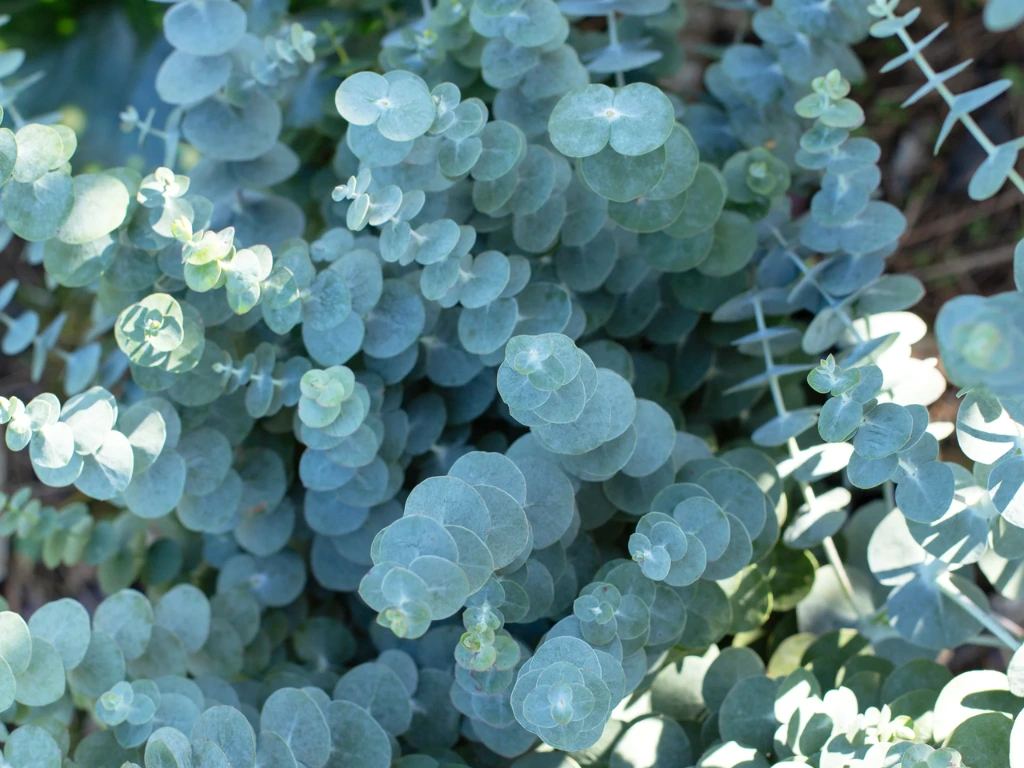
-
Snow Gum (Eucalyptus pauciflora): Known for its incredible bark patterns and excellent cold tolerance, this variety adds winter interest to any landscape.
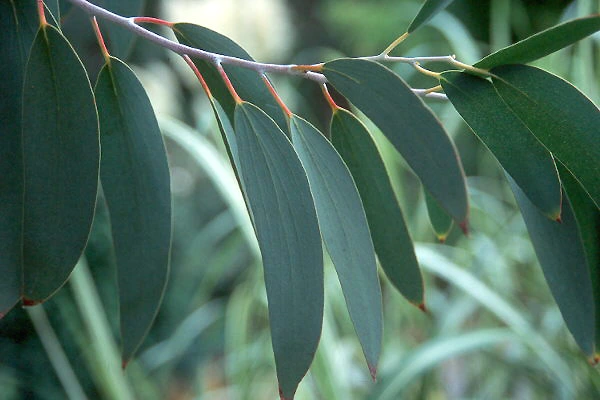
Benefits of Growing Eucalyptus in Your Landscape
Adding eucalyptus to your garden offers more than just good looks:
-
The aromatic oils provide a refreshing scent that many find therapeutic
-
Their fast growth makes them excellent privacy screens
-
The unique foliage adds texture and visual interest to garden designs
-
Most species are drought-tolerant once established, perfect for water-conscious gardening
-
They attract pollinators but typically repel deer, a winning combination!
10 Expert Tips for Growing Eucalyptus
Expert Tip #1: Choose the Right Eucalyptus Species for Your Climate
Success starts with selecting the right variety for your specific growing conditions.
Most eucalyptus species thrive in USDA hardiness zones 8-11, preferring the milder temperatures of these regions. If you live in zones 7-8, focus on cold-hardy options like Eucalyptus gunnii (Cider Gum) or Eucalyptus pauciflora (Snow Gum).
For those in colder regions, don’t despair! Consider growing eucalyptus in containers that can be moved indoors during winter, or treat them as annual plants, enjoying their beauty for one season.
Creating a favorable microclimate can also help. Plant eucalyptus in sheltered locations protected from harsh winter winds, ideally with a southern exposure that maximizes sunlight. I’ve seen eucalyptus thrive against south-facing walls that provide both wind protection and radiating warmth.
Expert Tip #2: Planting Eucalyptus for Optimal Growth
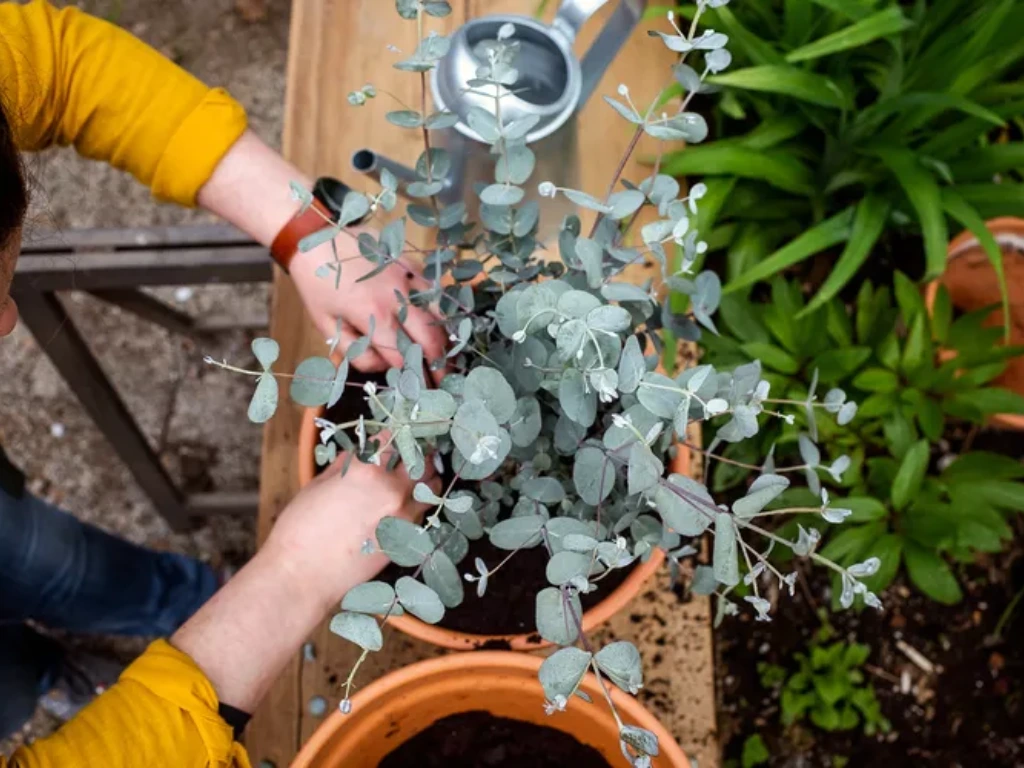
Timing is everything when it comes to planting eucalyptus successfully.
Spring is the ideal planting time, allowing roots to establish before either summer heat or winter cold. Avoid planting during extreme temperature periods – eucalyptus doesn’t appreciate being transplanted during very hot or very cold weather.
When planting, follow these steps for the best results:
-
Dig a hole three times wider than the root ball, but no deeper
-
Handle the roots gently – eucalyptus trees hate root disturbance
-
Don’t loosen the roots as you might with other plants
-
Place the root ball in the hole, keeping the top level with or slightly above the soil surface
-
Backfill with native soil (avoid enriching with compost)
-
Water thoroughly to settle the soil around the roots
-
Apply a light mulch layer, keeping it away from the trunk
A neighbor of mine tried planting eucalyptus in fall just before a cold snap, and the tree struggled to establish. When he replanted in spring, the difference was remarkable – robust growth within weeks!
Expert Tip #3: Soil Requirements for Healthy Eucalyptus
Eucalyptus trees aren’t particularly fussy about soil type, but they do have specific requirements for successful growth.
The most important soil characteristic is drainage – eucalyptus absolutely cannot tolerate soggy roots. If your soil has heavy clay content, consider amending it with sand or grit to improve drainage, or planting on a slight mound.
The ideal pH range is slightly acidic to neutral (6.0-7.0). Before planting, test your soil to ensure it falls within this range. If your soil is very alkaline, consider container growing with appropriate potting mix instead.
Interestingly, eucalyptus trees actually prefer poor to moderately fertile soil. Avoid high-phosphorus fertilizers, as they can damage eucalyptus roots. If you notice yellow leaves, a light application of nitrogen-based fertilizer in spring may help, but generally, these trees need minimal feeding.
Expert Tip #4: Mastering Eucalyptus Watering Techniques
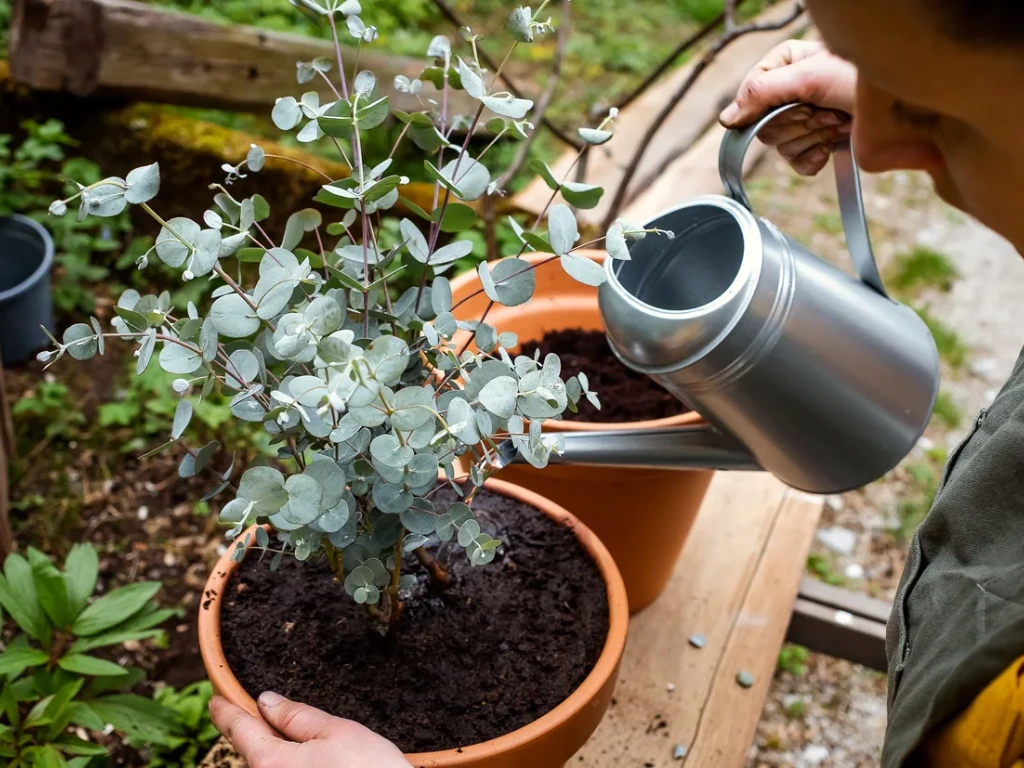
Getting watering right is crucial for eucalyptus success, especially during the establishment phase.
During the first year, water consistently to help develop a strong root system. The soil should be kept evenly moist but never soggy. After establishment (typically 1-2 years), eucalyptus becomes quite drought-tolerant, though extended dry periods may cause leaf drop.
How do you know if you’re watering correctly? Look for these signs:
-
Underwatering: Drooping or curling leaves, premature leaf drop
-
Overwatering: Yellowing leaves, stunted growth, root rot symptoms
I’ve found that deeply watering once a week during dry periods works better than frequent shallow watering. During hot summers, increase frequency as needed, but always allow the soil to dry slightly between waterings.
Container-grown plants typically need more frequent watering than those in the ground. Check moisture by inserting your finger into the soil – if it feels dry at your fingertip, it’s time to water.
Expert Tip #5: Sunlight and Positioning for Thriving Eucalyptus
Eucalyptus trees are sun-lovers, requiring at least 6 hours of direct sunlight daily to thrive. Without adequate sun, they become leggy and produce fewer of the aromatic oils that make them special.
When choosing a planting location, look for areas with:
-
Full sun exposure (southern exposure is ideal in North America)
-
Protection from strong, cold winds
-
Enough space for mature growth (check the specific variety’s requirements)
-
Good air circulation to prevent fungal issues
While most varieties demand full sun, some species like Eucalyptus neglecta and Eucalyptus crenulata can tolerate partial shade, though they may grow more slowly.
Remember to consider the tree’s mature size when planting. That cute little sapling could become a 30-foot giant in just a few years! I once had to help a friend remove a poorly placed eucalyptus that had quickly grown to block his home’s best views.
Expert Tip #6: Container Growing Success Strategies
Don’t have space for a full-sized tree? Container growing offers a great alternative for eucalyptus enthusiasts.
Start with a large container – at least 18-24 inches in diameter. Eucalyptus grows rapidly and becomes root-bound quickly in small pots. Ensure excellent drainage with multiple drainage holes and a layer of gravel at the bottom.
For potting mix, use a high-quality, well-draining medium. A mixture of regular potting soil with about 30% added perlite or coarse sand works well, providing both drainage and stability.
Container-grown eucalyptus requires special considerations:
-
More frequent watering than garden plants
-
Regular feeding with low-phosphorus fertilizer during growing season
-
Repotting every 1-2 years as they quickly outgrow containers
-
Winter protection if temperatures drop below 50°F
In cold-winter areas, move containers to a protected location like an unheated garage or sunroom during winter. The plants need some light during this period but can tolerate reduced levels.
Expert Tip #7: Pruning and Training Your Eucalyptus
Strategic pruning helps manage size and shape while promoting bushier growth and maintaining those gorgeous juvenile leaves many gardeners prize.
The best time to prune eucalyptus is in spring or early summer during active growth. Use sharp, clean tools to avoid spreading disease, making angled cuts to promote healing.
For a tree form, select a strong central leader and remove competing stems. To maintain a smaller, bushier plant, try these techniques:
-
Coppicing: Cutting the plant back to 2-3 inches above ground level every 2-3 years
-
Pollarding: Cutting back to a framework of branches at a higher level
These methods encourage fresh growth with juvenile foliage – the rounded, silvery leaves prized by florists and crafters. I’ve maintained a Silver Dollar Eucalyptus as a 6-foot shrub for years using annual pollarding, enjoying beautiful juvenile foliage each season.
Remember not to remove the lower side branches too early in a young tree’s life – they help strengthen the trunk and prevent it from becoming top-heavy.
Expert Tip #8: Growing Eucalyptus Indoors Guide
Yes, you can grow eucalyptus indoors, though it requires specific care to thrive in household conditions.
Choose compact varieties like Eucalyptus gunnii ‘France Bleu’ or Eucalyptus pulverulenta for indoor growing. Place your plant in the brightest spot available – a south-facing window is ideal. Supplement with grow lights if natural light is insufficient.
Indoor eucalyptus prefers temperatures between 65-75°F with moderate humidity. Avoid placing near heating vents or air conditioners, which create too much dryness. Use a pebble tray with water or a room humidifier to increase humidity.
Prune regularly to control size and encourage bushy growth. Indoor plants may never reach the lush fullness of outdoor specimens, but with proper care, they can still provide beautiful foliage and that distinctive eucalyptus scent.
Expert Tip #9: Troubleshooting Common Eucalyptus Problems
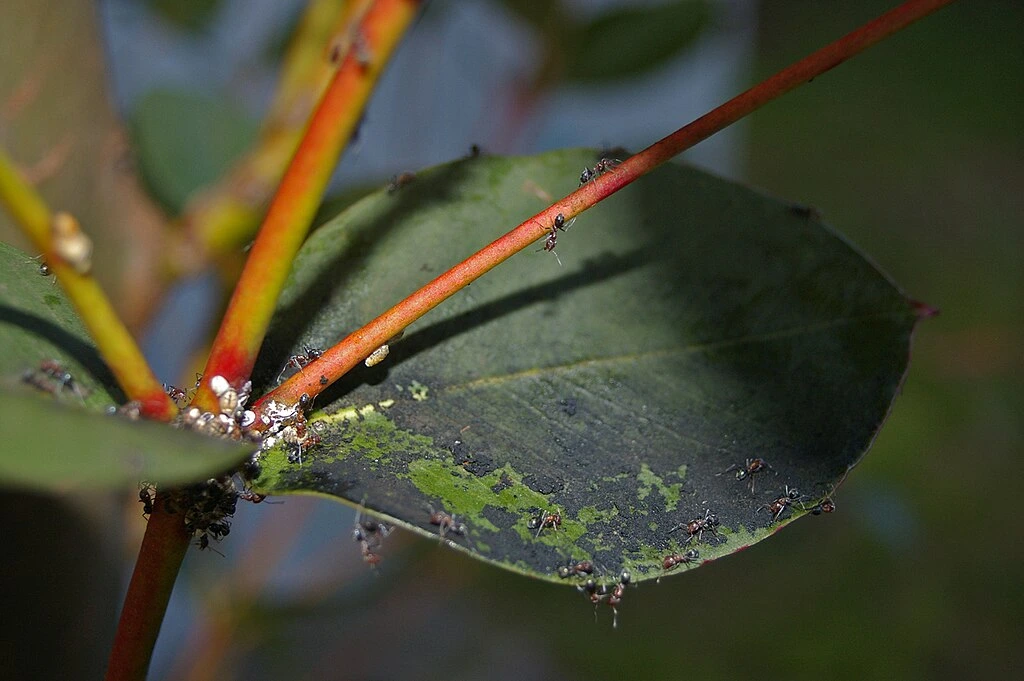
Even well-cared-for eucalyptus can encounter occasional issues. Here’s how to address the most common problems:
Pests:
-
Eucalyptus Gall Wasp: These create small swellings on leaves. Remove affected leaves if infestation is light, or use insecticidal soap for larger problems.
-
Longhorn Borers: Watch for oozing sap and exit holes in bark. Prevention through proper plant care is best, as these typically attack stressed trees.
Diseases:
-
Root Rot: Caused by overwatering or poor drainage. Prevention is crucial, as treatment is difficult.
-
Powdery Mildew: Appears as a white powder on leaves in humid conditions. Improve air circulation and avoid overhead watering.
Environmental Issues:
-
Leaf Drop: Often caused by drought, temperature extremes, or transplant shock.
-
Yellowing Leaves: Usually indicates nutrient deficiency or improper watering.
The best defense against problems is preventative – proper planting, watering, and environmental conditions keep plants resilient against most issues.
Expert Tip #10: Harvesting and Using Your Eucalyptus
One of the joys of growing eucalyptus is harvesting branches for decorative and practical uses.
For best results, harvest branches in the morning when oil content is highest. Choose stems with mature, fully developed leaves. Use sharp pruners to make clean cuts, removing no more than one-third of the plant at one time.
Fresh eucalyptus can be used immediately in floral arrangements. To preserve branches, hang them upside down in a dark, dry, well-ventilated area for 2-3 weeks.
Creative uses for your harvested eucalyptus include:
-
Creating fragrant wreaths and garlands
-
Making shower bundles for aromatherapy
-
Adding to fresh or dried flower arrangements
-
Creating natural air fresheners
-
Crafting botanical prints
A friend of mine creates beautiful seasonal wreaths combining eucalyptus with other garden materials, changing the accompaniments seasonally while the eucalyptus provides year-round structure and scent.
Frequently Asked Questions About Eucalyptus Care
Is eucalyptus toxic to pets and children? Yes, eucalyptus contains oils that are toxic if ingested by pets or children. Keep plants out of reach and supervise young children and pets around Eucalyptus trees. The bark, leaves, and sap all contain these oils.
Can eucalyptus be grown from seed, and how do I do it? Yes, though it requires some special steps. Refrigerate seeds for two months (stratification), then sow in spring in seed-starting mix. Keep warm and moist until germination, which typically takes 2-3 weeks.
How fast does eucalyptus grow, and how large will it get? Eucalyptus is known for rapid growth, often gaining 3-6 feet per year under ideal conditions. Mature size varies by species, from shrubby 10-foot varieties to towering 60-foot specimens. Regular pruning can control size.
What should I do if my eucalyptus suffers frost damage? Wait until spring before pruning frost-damaged areas. New growth often emerges from seemingly dead branches. For future protection, consider wrapping the trunk with burlap in late fall and mulching around the root zone.
Growing eucalyptus successfully is all about understanding what these unique trees need. With their fast growth, aromatic foliage, and ornamental features, they reward your care with beauty and fragrance that few other garden plants can match.
Whether you’re growing a towering specimen in your garden, maintaining a compact variety in a container, or enjoying eucalyptus as a houseplant, these 10 expert tips will help you create the conditions these Australian natives need to thrive in American gardens.
What eucalyptus variety will you try growing first? With the right care, you’ll be enjoying those distinctive blue-green leaves and invigorating scent for years to come!
